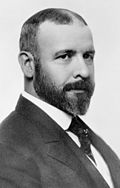Wainwright Tomb | |
 Wainwright Tomb | |
| Location | Bellefontaine Cemetery 4947 W. Florissant Ave. St. Louis, MO, United States |
|---|---|
| Coordinates | 38°41′20″N90°13′28″W / 38.68889°N 90.22444°W |
| Area | less than one acre |
| Built | 1892 |
| Architect | Louis Sullivan |
| Architectural style | Chicago school |
| NRHP reference No. | 70000907 [1] |
| Added to NRHP | June 15, 1970 |
The Wainwright Tomb is a mausoleum located in Bellefontaine Cemetery in St. Louis, Missouri. Originally constructed for Charlotte Dickson Wainwright in 1892, the tomb also contains the remains of her husband, Ellis Wainwright. The mausoleum was designed by noted Chicago school architect Louis Sullivan, who also designed the Wainwright Building for Ellis Wainwright. [2]





